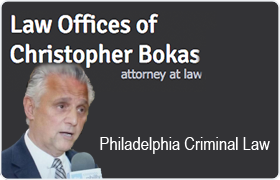Upper Black Eddy White Collar Crime Lawyer, Pennsylvania
Sponsored Law Firm
-
 x
x

Click For More Info:
Call for Free Consultation
-
Law Offices of Christopher Bokas
20 West Third Street Media, PA 19063 » view mapCriminal Defense, DUI, Felonies, Misdemeanors Why Christopher Bokas?
At Law Offices of Christopher Bokas, we offer services in Criminal Law and Bankruptcy Law. With over 35 years of experience in the field I can help you.
800-997-6550  Christopher Bokas Media, PA
Christopher Bokas Media, PAAttorney At Law - PA, 1975
University of Baltimore School of Law
Robert Charles Patterson
White Collar Crime, Misdemeanor, Felony, DUI-DWI
Status: In Good Standing Licensed: 30 Years
FREE CONSULTATION
CONTACTChristopher P. Fiore
Traffic, White Collar Crime, DUI-DWI, Criminal
Status: In Good Standing Licensed: 26 Years
Gavin P Holihan
Traffic, White Collar Crime, DUI-DWI, Criminal
Status: In Good Standing Licensed: 32 Years


 Christopher Bokas Media, PA
Christopher Bokas Media, PA
